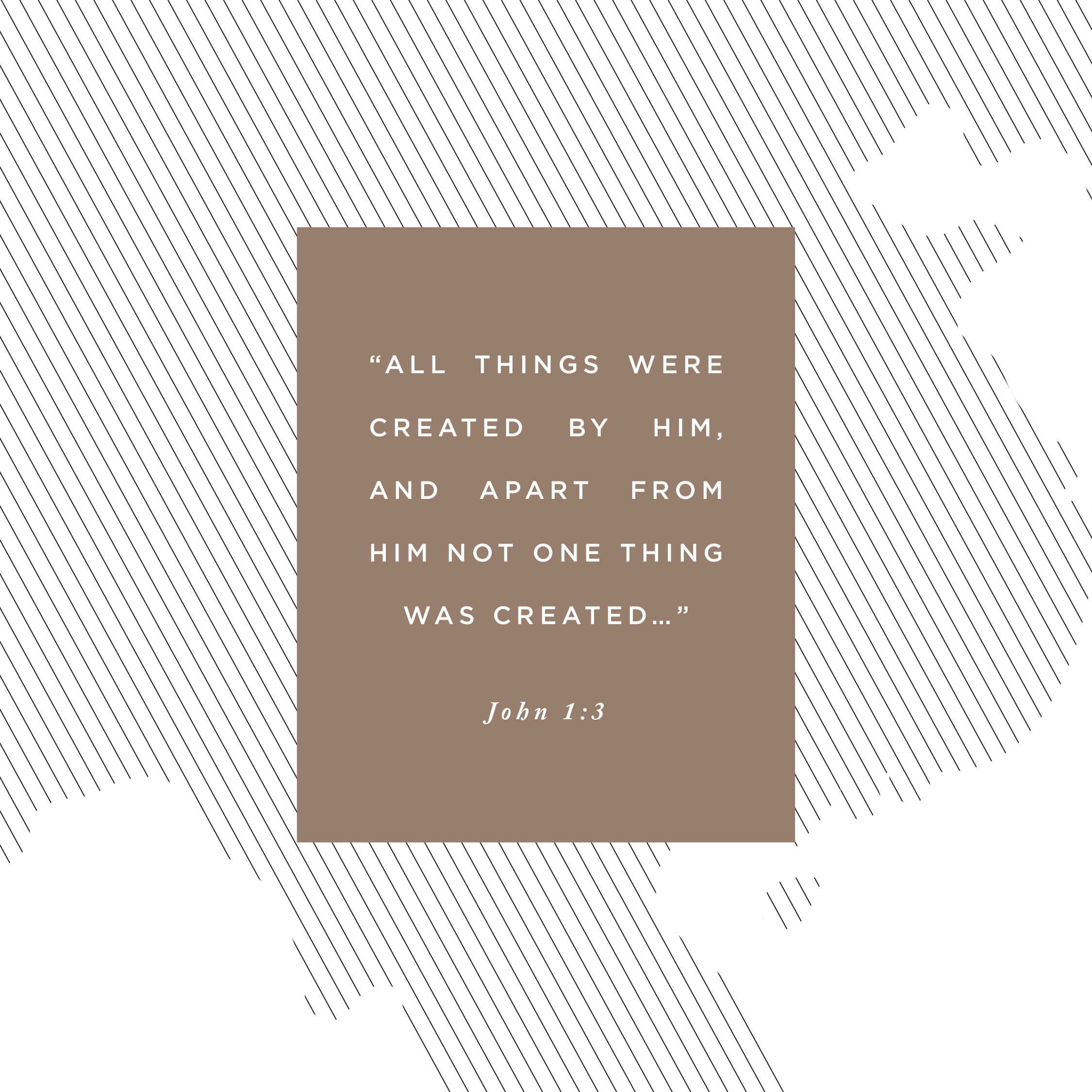Our Security for Eternity - the Gospel of John নমুনা


Week 1
Read: John 1:1–18
SOAP*: John 1:1–4
In the beginning was the Word, and the Word was with God, and the Word was fully God. The Word was with God in the beginning. All things were created by him, and apart from him not one thing was created that has been created. In him was life, and the life was the light of mankind.
The Gospel of John wastes no time in revealing the purpose of the book. Within the first four verses we are told that the Word is fully God, was with God in the beginning, created all things, and is life and light. But who is the Word? It is not obvious in this first paragraph who the apostle John, the author of this Gospel, is referring to. As the prologue (or introduction) of the book (John 1:1–18) continues, it reveals more of who the Word is.
In the original Greek, the word translated as Word is logos. Logos can describe communication, either written or oral, as a way of expressing divine truth. In this instance, the author used the word logos to describe the personified Word of God. We will discover through this study that this Word of God took on human form in the person of Jesus Christ.
We learn that a man named John was sent from God (a different John than the author of this book). This John came as a witness, meant to testify about the Word so that everyone would believe in Him. John’s purpose was to testify about the Word because the world did not recognize the Word for who He is. We learn that the Word became flesh—meaning He did not always have a human body—and came to live on earth. He displayed His glory, glory that came from God alone. John (the witness) testified about the Word who became flesh. In verse 17 we are told that the Word is Jesus Christ. Verse 18 testifies that the Word, Jesus Christ, is Himself, God.
This prologue to the Gospel of John is packed with insight. John (the author) tells his readers immediately what he intended to prove in this writing: Jesus is the Son of God and the only way to eternal life.
As we begin our study of the Gospel of John, our challenge is to read it with fresh eyes. Let’s engage with Scripture as though it were the first time we were reading this Gospel (maybe it is!). As you read, underline or highlight passages in your journal or Bible that affirm the main message of the book: Jesus is the Son of God and the only way to eternal life.
* As we study the Bible, we use the SOAP Bible Study Method. The acronym stands for Scripture, Observation, Application, and Prayer.
1. Scripture. Write out the verses at least one time. Slow down and copy the passage from the text, focusing on what you are writing. Writing it more than once is always helpful.
2. Observation. Take time to observe the passage. What do you see in the verses you're reading? Who is the intended audience? To whom is the writer speaking? What cultural factors are at play? Are any words or themes repeated? What literary devices are being used?
3. Application. After carefully observing what is happening in the passage, determine the central message or truth of the passage. How can you apply this truth to your life?
4. Prayer. Pray God's Word back to Him. If He has revealed something to you during this time, pray about it. Confess any sin God has revealed. Pray through the truth of the passage.
Scripture
About this Plan

Through the reading of John’s Gospel, we can know what it means to have faith in Jesus and enjoy eternal life. We can read John’s testimony of Jesus knowing he is not out to mislead us but to offer us hope in Jesus. Whether you’ve never placed your faith in Jesus or have been walking with Him for many years, this study will deepen your understanding of who Jesus is.
More
Related Plans

Young Adults + Our Stories 2

Achieving Victory With Jesus

God's Hope for Orphans: Every Child Deserves a Family

Your Brain on Porn – Break Free From a Lust and Porn Addiction

Strengthen Your Faith #1 the Call

The Love That Brings Us Back

The Power of Reaching Others

Prayer 101

Worship With CXMMXNS: A 3-Day Devotional
